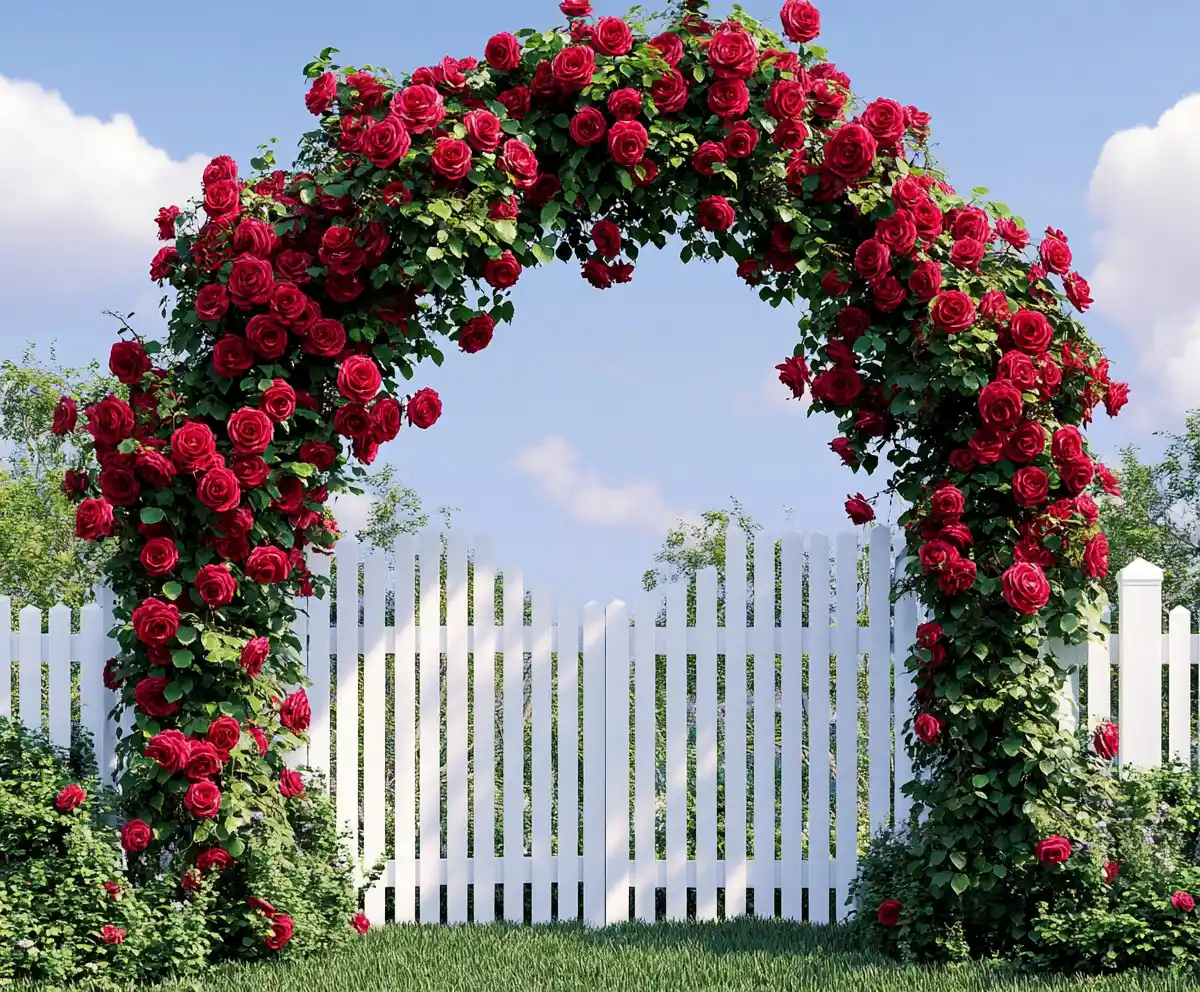Roses have long been a symbol of beauty, romance, and timeless elegance in gardens around the world. Thanks to modern breeding efforts, today’s roses are more disease-resistant, low-maintenance, and beginner-friendly than ever before—making them the perfect star for any garden design. Whether you’re dreaming of a charming backyard retreat or a show-stopping front yard display, a rose garden offers endless opportunities for creativity and personal expression.
From grand formal layouts to compact balcony arrangements, designing with roses is as flexible as it is rewarding. This guide will help you turn your vision into reality by covering everything from planning your rose garden to choosing companion plants and layout styles—no matter your space or skill level.
🧭 1. Planning a Rose Garden
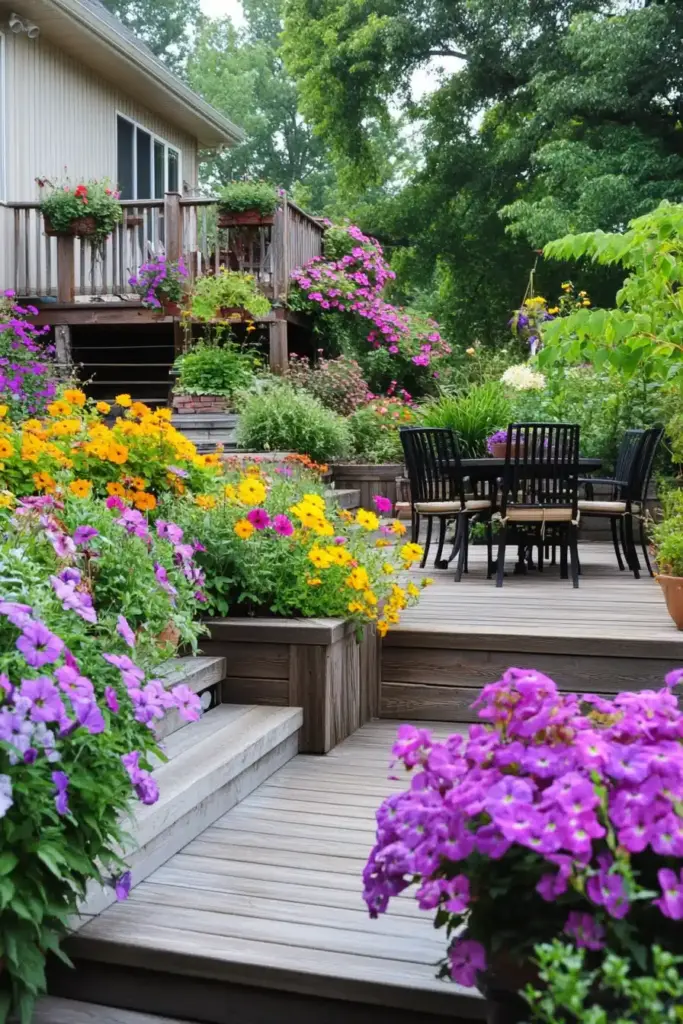
Creating a successful rose garden starts with thoughtful planning. While roses are resilient, they thrive best in conditions tailored to their needs. Here’s how to set the stage for a flourishing and beautiful garden.
🌞 Choose the Right Location
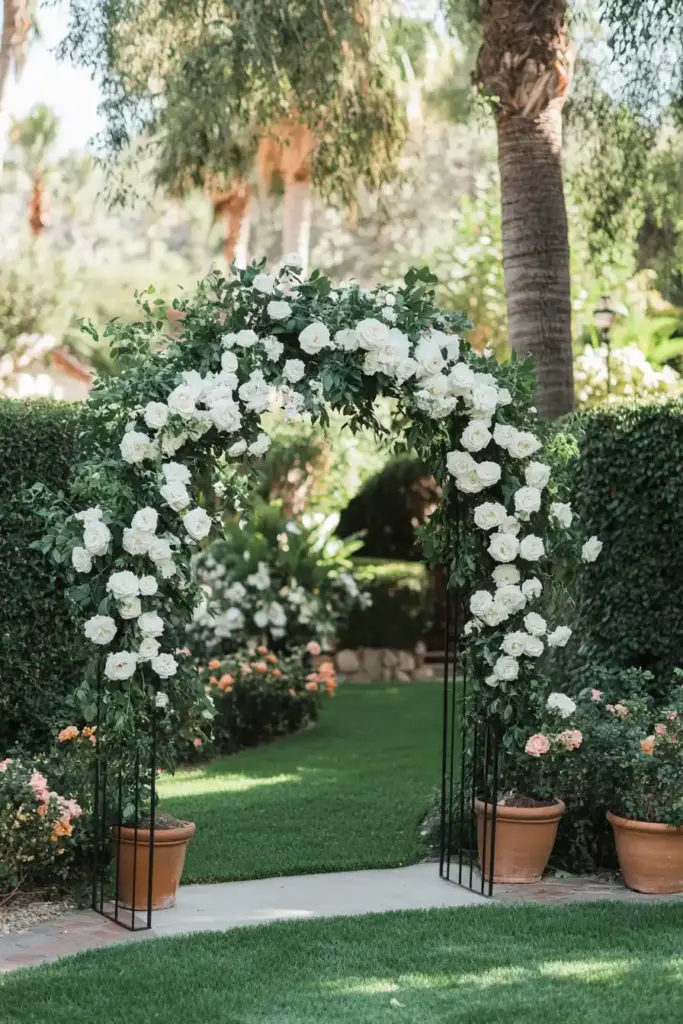
Roses love the sun—ideally 6 to 8 hours of direct sunlight per day. Pick a spot with good air circulation, which helps reduce the risk of fungal diseases like black spot and powdery mildew. Avoid low-lying areas where water might pool after rain.
🗺️ Sketch Your Design
Before planting, sketch out your garden on paper or use a garden design app. Consider:
- Paths for easy access to beds
- Seating areas to enjoy your blooms up close
- Focal points like arbors, trellises, or a small fountain
- Bed sizes that allow you to reach in for pruning and weeding
- Gentle curves or geometric layouts, depending on your preferred style
🎨 Pick a Style & Color Theme
Do you prefer the neat symmetry of a formal garden or the relaxed charm of a cottage-style layout? Choose a look that complements your home and your personal taste.
Color plays a big role in garden harmony. Try these tips:
- Use complementary colors (e.g., yellow and purple) for a vibrant look.
- Stick with soft pastels for a romantic atmosphere.
- Keep it monochromatic for a more modern, sophisticated vibe.
🌱 Prepare the Soil
Roses thrive in rich, well-draining soil with a slightly acidic pH (6.0–7.0). To improve soil structure and fertility:
- Mix in compost or aged manure before planting.
- Avoid heavy clay unless it’s amended with organic material and sand for better drainage.
- For containers, choose a high-quality potting mix and ensure your pots have drainage holes.
🌹 Choose the Right Roses
Modern roses have come a long way in terms of low maintenance and disease resistance. Look for:
- Varieties like Oso Easy® or Knock Out® that bloom repeatedly
- Fragrant types if scent is important to you
- Shrub roses for hedging or groundcovers for borders
- Miniature or patio roses for containers
Pro Tip: When in doubt, choose roses labeled as “easy-care,” especially if you’re just starting out.
🏡 2. Rose Gardens in Different Spaces
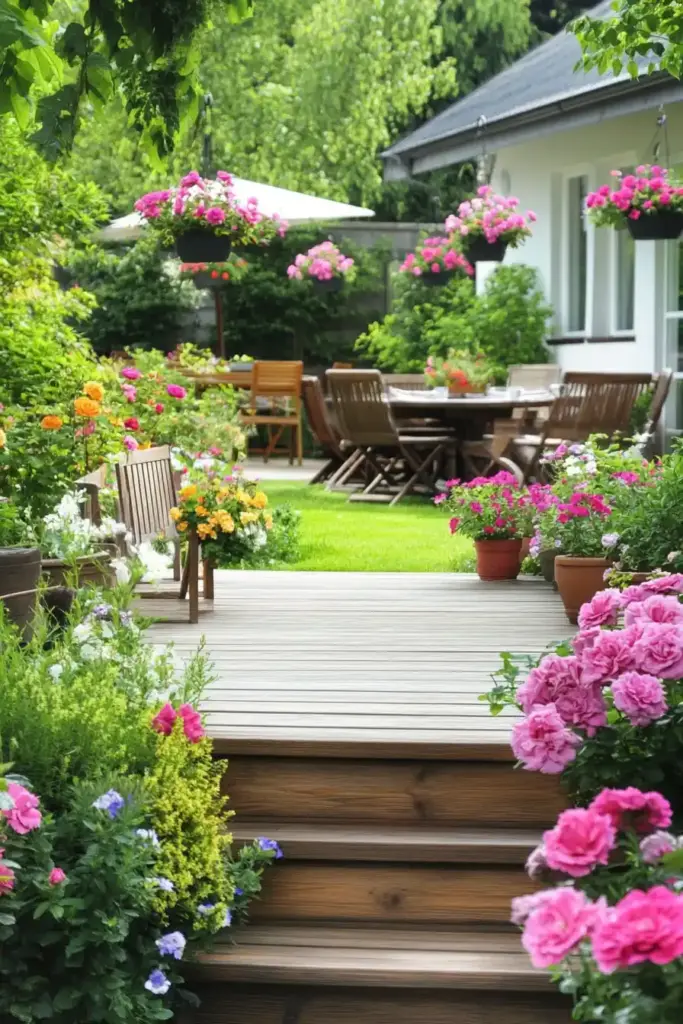
No matter the size or layout of your yard—or even if you only have a balcony—there’s a way to incorporate roses into your landscape. Here’s how to make roses shine in a variety of spaces.
🏰 Large Gardens
Expansive spaces open the door to more elaborate rose garden designs. You can go all out with formal layouts, pathways, and structures like pergolas or arbors.
Tips for larger spaces:
- Use repeating groupings of 3–5 of the same rose variety to create impact.
- Stick to color blocks for a more cohesive, visually striking appearance.
- Incorporate seating areas, sculptures, or water features to create focal points and places to pause.
- Plant larger rose varieties that won’t get lost in the scale of the landscape.
🪴 Small Gardens
Limited space doesn’t mean you have to sacrifice beauty. Compact or vertical rose gardens can be just as charming—and easier to maintain.
Space-saving ideas:
- Choose miniature or patio roses suited to containers or tight beds.
- Add trellises or obelisks for vertical growing with climbing varieties.
- Keep your color palette simple—one or two colors help small spaces feel more unified and less cluttered.
- Use light-colored roses like white or pale yellow to brighten and visually expand the area.
🚪 Front Yard Rose Gardens

A front yard rose garden boosts curb appeal and welcomes visitors with color and fragrance—but it requires strategic planning to keep things tidy and functional.
Front yard essentials:
- Leave enough space between rose bushes and walkways to avoid scratched ankles or snagged clothing.
- Don’t overcrowd—ensure plants have room for airflow to prevent disease.
- For foundation plantings, keep roses away from walls so air can circulate and moisture won’t build up.
🌳 Backyard Rose Gardens
Backyards are perfect for creating private garden retreats or areas meant for entertaining and relaxation.
Backyard enhancement ideas:
- Add seating nooks, especially near fragrant varieties.
- Position roses where they can be enjoyed from windows or patios.
- Use benches, garden art, or water features as focal points among the blooms.
- Create a path that draws visitors through the garden and encourages lingering.
🌿 3. Landscaping Tips with Roses
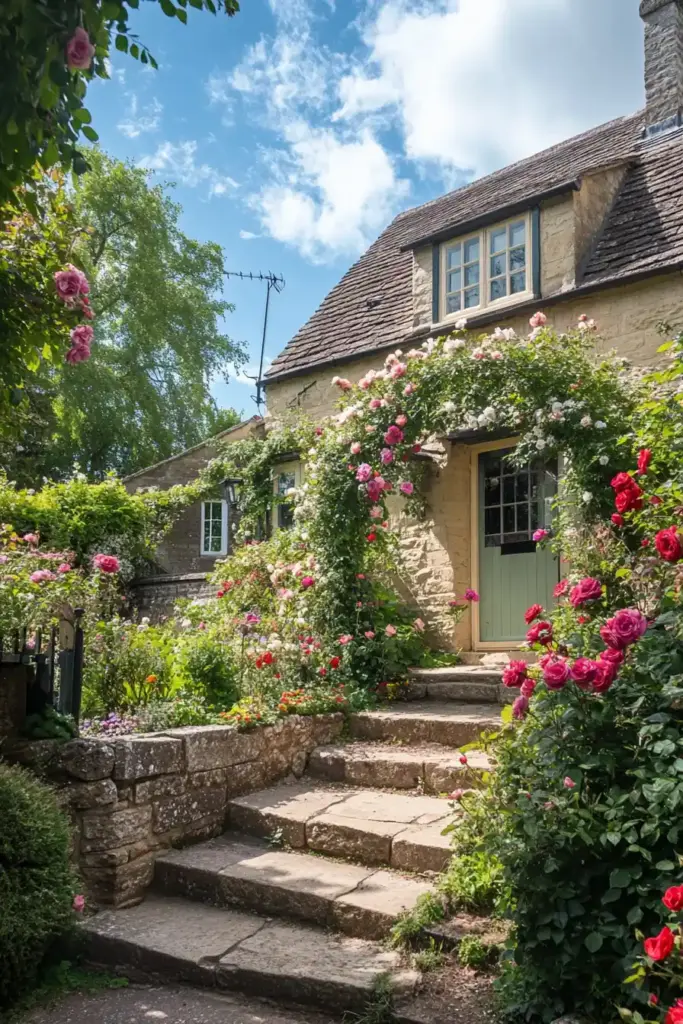
Roses are more than just garden showpieces—they’re also versatile design elements. With the right landscaping strategies, you can use them to add structure, softness, privacy, and year-round interest to your garden.
🌹 Think Vertical
Using vertical space adds drama and dimension to any garden.
- Train climbing roses on arbors, trellises, or pergolas to create living walls or entryways.
- Pair them with vining companions like clematis or jasmine for color layering and seasonal interest.
- Use vertical plantings as room dividers between different areas of your yard.
↔️ Use Horizontal Spread
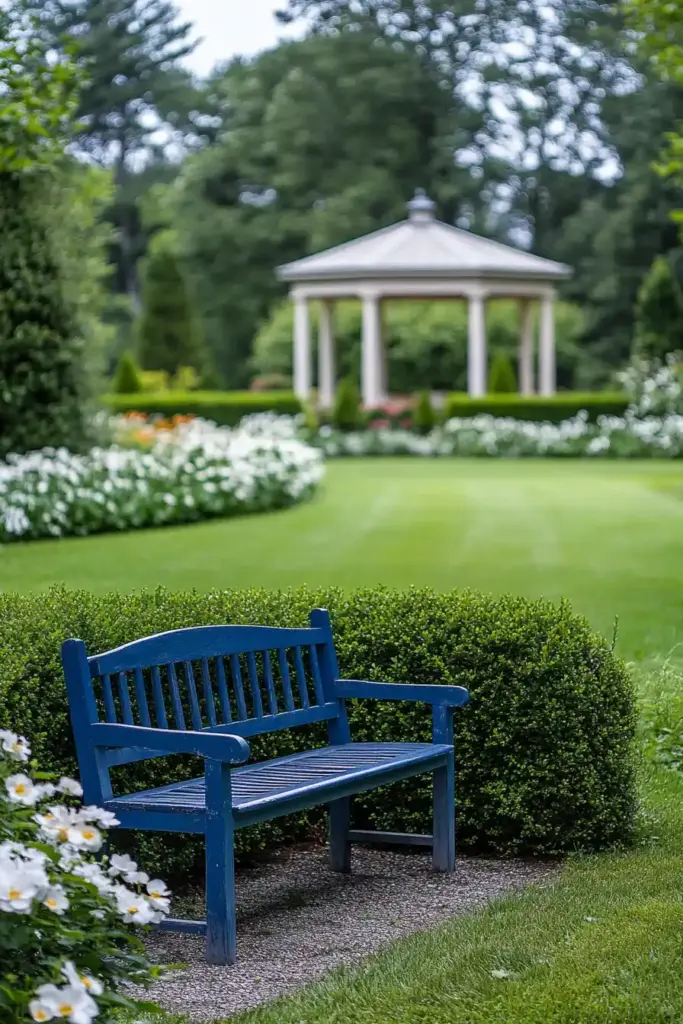
Want to soften hard edges or fences? Horizontal designs with roses can make harsh lines feel more natural and inviting.
- Line fences with shrub or climbing roses to soften structures.
- Use groundcover roses on slopes for erosion control and a cascading effect.
- Edge paths or garden beds with low-growing varieties for a neat but colorful finish.
🌱 Plant in Containers
Container gardening with roses is a fantastic option for patios, decks, balconies, or renters.
- Choose containers 15–20 inches wide and deep for standard roses; smaller pots for miniature types.
- Ensure excellent drainage and use high-quality potting soil.
- Try half whiskey barrels for a rustic look and ample space.
- Group containers with varying heights to add visual interest.
🏞️ Cover Slopes & Borders
Certain rose types are great for tough-to-plant spots like hills or border edges.
- Groundcover roses like Drift® or Flower Carpet® are low maintenance and ideal for slope planting.
- Use taller shrub roses as privacy hedges or living fences.
- Incorporate roses in mixed borders with perennials, grasses, and small shrubs to create texture and seasonal variety.
🚪 Entrances & Transitions
Roses can play a key role in shaping how people move through your garden.
- Place a rose-covered arbor over a pathway to create a welcoming entrance.
- Define separate garden zones by using climbing roses at key transitions—like between the front and backyard.
🌸 4. What to Plant with Roses

Roses may be the stars of the show, but the right supporting cast of plants can elevate your entire garden. Companion planting not only adds visual interest, but it can also improve soil health, attract pollinators, and discourage pests.
🌼 Flowering Companions
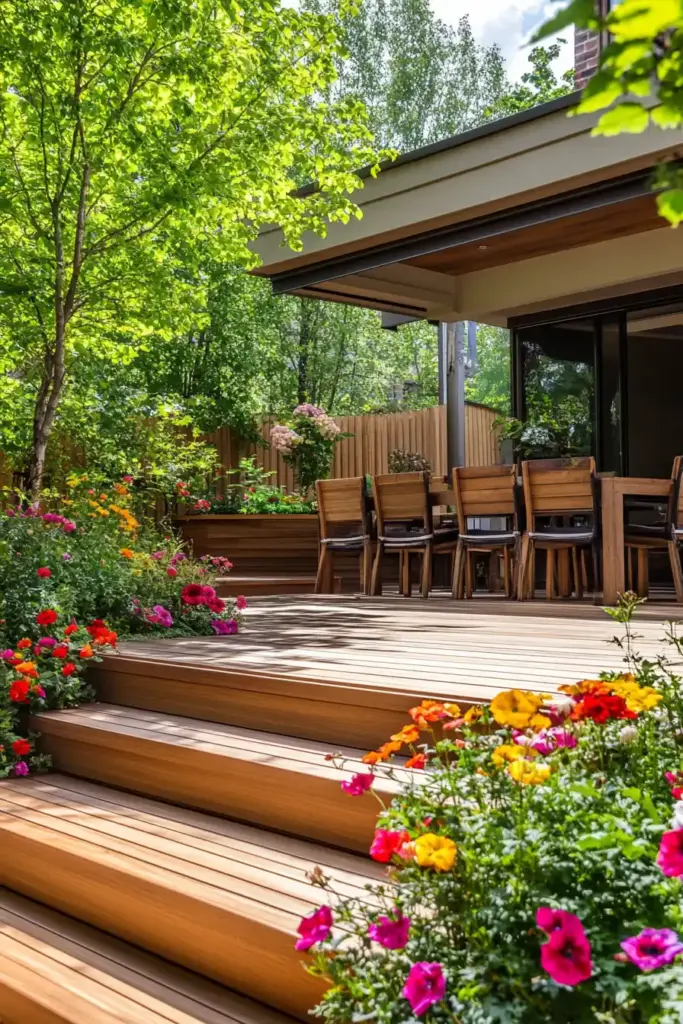
For color continuity and extended bloom time, mix roses with flowering plants that thrive in similar conditions—full sun and well-draining soil.
- Petunias, calibrachoa, and verbena: Low-growing annuals that fill gaps and spill over borders.
- Salvia, catmint, and phlox: Offer soft contrast and attract bees and butterflies.
- Lavender: Classic pairing with roses; its silvery foliage complements any rose color while deterring pests.
🌳 Trees & Shrubs
Trees and shrubs can provide structure, shade, or seasonal contrast to your rose beds.
- Small flowering trees like dogwood, crabapple, and fringe tree add vertical interest and bloom at different times.
- Shrubs like boxwood, spirea, or daphne bring year-round texture and act as evergreen anchors.
🌿 Groundcovers
Low-growing plants help suppress weeds, retain moisture, and add texture around the base of roses.
- Perennial geraniums, lady’s mantle, and bugleweed work beautifully as living mulch.
- Choose varieties with foliage that contrasts the rose’s leaves for added dimension.
🌱 Perennials for Layers
Layering perennials around roses gives your garden a lush, well-thought-out look.
- Alliums, speedwell, echinacea, and coreopsis bring seasonal flair and pollinator appeal.
- Go for staggered bloom times to maintain color from spring through fall.
🌿 Vines for Height & Flair
Interplanting vines can elevate your rose garden both literally and visually.
- Clematis: A classic combo with climbing roses—let them weave through each other for an effortless cottage garden vibe.
- Climbing bleeding heart or jasmine add fragrance, texture, and a touch of the exotic.
Design Tip: Keep maintenance in mind. Avoid overcrowding, and plant companions either in front of or behind your roses—not between them—so you have space for pruning and care.
🌼 5. Rose Garden Design Ideas Summary
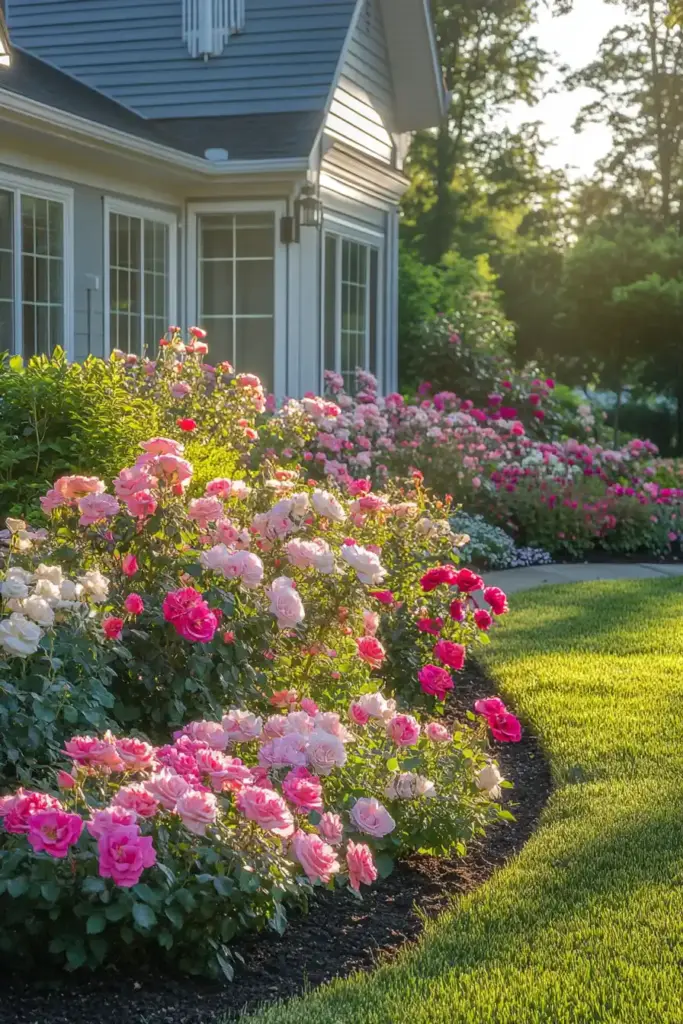
Designing a rose garden is more than just planting pretty flowers—it’s about creating an immersive, sensory-rich space that brings beauty and peace throughout the seasons. Whether your garden is large or small, formal or casual, here are the key takeaways to guide your rose garden design:
🌟 Key Design Principles:
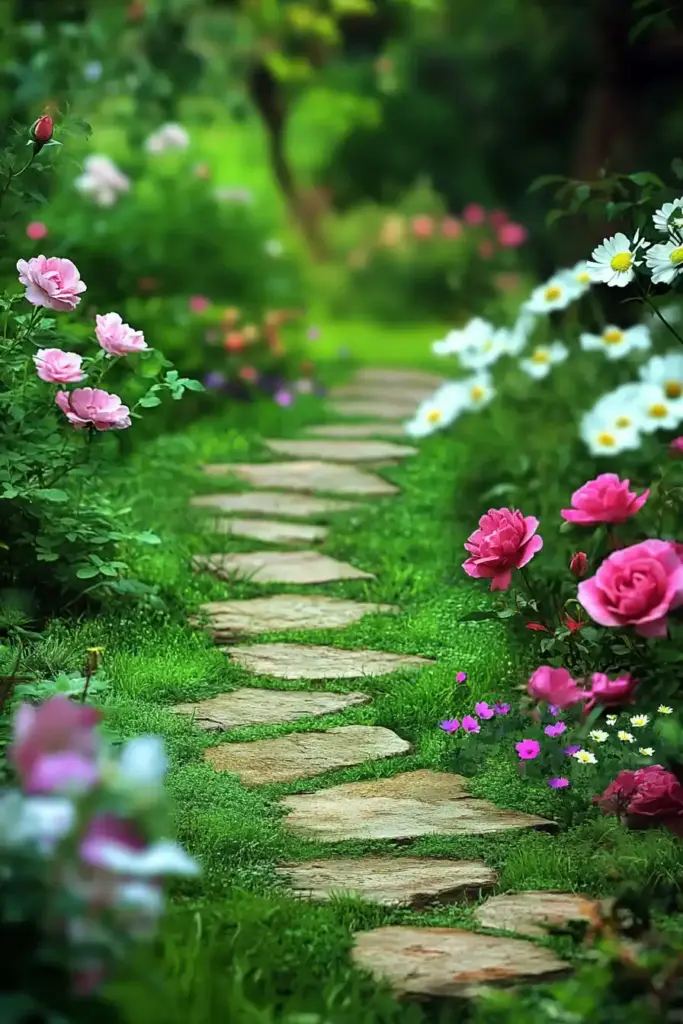
- Plan with Purpose: Sketch your layout, choose your site wisely, and match the style to your home and personality.
- Think in Layers: Combine roses with trees, shrubs, perennials, and groundcovers for depth and texture.
- Use Color Strategically: Stick to a clear palette—either soft and romantic or bold and dramatic—for a cohesive look.
- Combine Fragrance, Form & Function: Choose roses and companion plants that deliver on scent, structure, and visual appeal.
- Design for All Seasons: Use evergreens and staggered bloomers to ensure your garden looks great year-round.
- Accessibility Matters: Make sure all plants are easy to reach for pruning and care, and include inviting paths and seating areas to encourage enjoyment.
With thoughtful design and the right plant choices, your rose garden can be a low-maintenance, high-impact masterpiece—ready to impress visitors and offer a daily dose of natural beauty.
✅ Conclusion
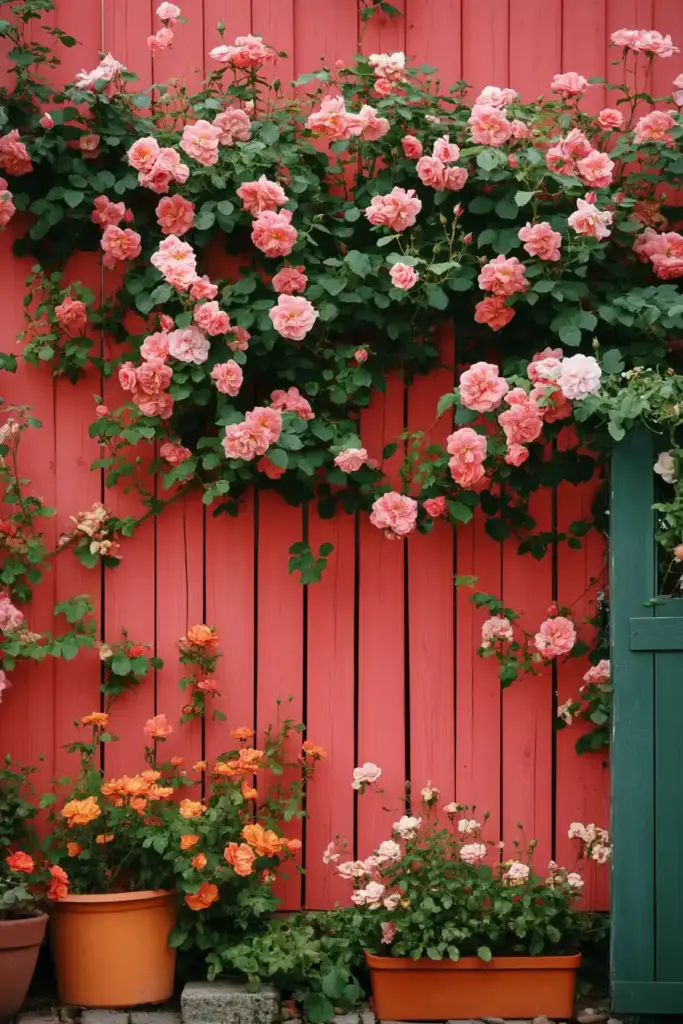
Creating a rose garden isn’t just about planting flowers—it’s about crafting a space that reflects your style and brings you joy season after season. With modern rose varieties and smart companion planting, you can build a garden that’s not only beautiful, but also easy to care for and beneficial to local pollinators. Whether you have a vast yard or a cozy balcony, roses will reward you with timeless charm and stunning blooms.

